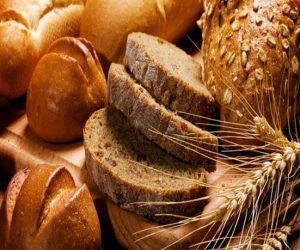Monocalcium Phosphate Side Effects
Monocalcium phosphate E341 (i) is a leavening agent, commonly used in the food industry to make baked goods rise. Though it’s considered safe, some are convinced it has potentially dangerous health effects.
What Is Monocalcium Phosphate E341 (i)?
Monocalcium Phosphate E341 (i) is a white crystalline powder or plate crystal. Monocalcium phosphate E341 (i) is the acid ingredient of baking powder and self-rising flour. It is used as a leaving agent in baking and is used in products such as pancakes, energy powder, cookies, doughnuts, cakes, pastry mixes, cake mixes and other pastry products. It is also used in soft drinks, vitamins, yeast, humectants for meat, curing agent for pectin, and nutrition enhancer. Monocalcium phosphate E341 (i) helps protein to coagulate and thicken in instant puddings and no-bake cheesecakes and helps frozen vegetables and canned fruits and vegetables maintain firmness.
Possible Side Effects of Monocalcium Phosphate E341 (i)
Though Monocalcium Phosphate E341 (i) is regarded as safe supplement, there maybe some side effects: harmful to the heart in excessive amounts.
GRAS Affirmation: Yes
Generally recognized as safe (GRAS) is an American Food and Drug Administration (FDA) designation that a chemical or substance added to food is considered safe by experts, and so is exempted from the usual Federal Food, Drug, and Cosmetic Act (FFDCA) food additive tolerance requirements. Monocalcium Phosphate E341 (i) is considered safe.
Suggested Dosage
NA.
Special Populations Precaution
There is a lot of concern about diet and nutrition for these population, like Newborns, children, pregnant, sensitive to Monocalcium Phosphate populations. Better consult to your doctor if you would like to intake Monocalcium Phosphate E341 (i).
Related Research
1. True total-tract digestibility of phosphorus in monocalcium phosphate for 15-kg pigs. [J Anim Sci. 2012 Dec] Author: Zhai H, Adeola O.
2. Phosphate: are we squandering a scarce commodity? [Nephrol Dial Transplant. 2014 Sep] Author: Ferro CJ1, Ritz E2, Townend JN3.
3. Additive concentration effects on dicalcium phosphate dihydrate cements prepared using monocalcium phosphate monohydrate and hydroxyapatite. [Biomed Mater. 2011 Nov 21] Author: Santa Cruz Chavez G, Alge DL, Chu TM.
4. Novel bioactive composite bone cements based on the beta-tricalcium phosphate-monocalcium phosphate monohydrate composite cement system. [Acta Biomater. 2009 May] Author: Huan Z, Chang J.
5. Novel tricalcium silicate/monocalcium phosphate monohydrate composite bone cement. [J Biomed Mater Res B Appl Biomater. 2007 Aug] Author: Huan Z, Chang J.

